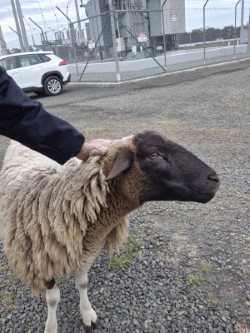Sheep at work: a simple idea that’s helping our solar farms
On paper, vegetation management at a solar farm is straightforward: keep grass down so the site stays safe, accessible, and productive. In practice, that can mean a lot of mowing, slashing and diesel. Last spring, our Daydream and Hayman Solar Farms tried something different – we invited about 1,000 Dorper sheep to do the job across 590 hectares.
Why sheep?
Dorpers are hardy, low-maintenance and well suited to drier conditions. They’re also very good at the exact task we care about: keeping grass and weeds in check under and around our arrays without fuss. It’s not a gimmick – it’s a practical way to manage vegetation with less noise, fuel and machinery on site.
How the trial worked
From September to December 2024, we rotated the flock through clearly marked zones. Our ops teams kept up routine safety checks, maintained access for technicians and emergency vehicles, and set exclusion zones around inverters and other equipment. If conditions changed, the rotation changed.
What we learned
· Less machine time, lower costs. Grazing reduced the time and cost of vegetation management by around 50%, worth roughly $200,000 per year across the two sites.
· Lower fuel use and emissions. Fewer mower and slasher runs meant about 6,000 fewer litres of diesel burned each year – roughly 17 t CO₂-e avoided.
· Lower fire risk, less herbicide. Keeping grass consistently low reduces fine fuel loads and the need for chemical control in sensitive areas.
· A better land-use story. Grazing added an extra income stream for the landholder, showing that clean energy and agriculture don’t just coexist – they can help each other.
What it means locally
This is a very practical way to use farming methods to solve an operational problem. Heavy-vehicle movements drop, and for landholders hosting solar, it allows a complementary income stream where the land costs are covered by the solar farm lease, and allows good farming land to stay in production.
What’s next
The trial gives us a clear path to expand grazing at Daydream and Hayman where conditions allow, and to assess other Atmos sites on a case-by-case basis. Not every farm lot or every season will be suitable. But where it fits, sheep can be part of a safer, cheaper, lower-impact way to manage solar farms.
If you’re a local farmer or sheep grazer interested in future grazing opportunities, or you’d like to know more about how we manage vegetation at our operating sites, get in touch with our Operations team at info@atmosrenewables.com.
